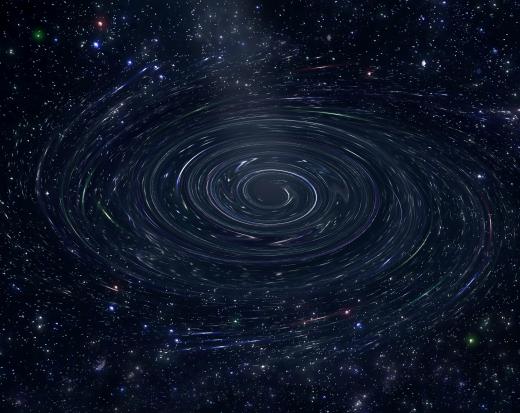What is the Chandrasekhar Limit?
 Michael Anissimov
Michael Anissimov
The Chandrasekhar limit is an important value in astrophysics. It is the mass limit at which a nonrotating astral body cannot be supported by the pressure of the electron shells in its atoms anymore, and gravitational collapse occurs. The Chandrasekhar limit is approximately 1.4 solar masses, or 2.85x1030 kg. Use of the Chandrasekhar limit is fundamental in analyzing the evolution and demise of stars.
The Chandrasekhar limit comes into play when the nuclear fuel in a star gets used up. Throughout the normal lifetime of the star, the outwards pressure from nuclear reactions counteracts the contracting force of gravity. Eventually, it uses up all its hydrogen fuel and departs from the main sequence. It's all downhill from there. The star fuses heavier and heavier nuclei until it lacks the temperature and density in its core to fuse anything more, or the core turns to iron, which is the heaviest fusion product that cannot itself be fused to produce more energy.

Throughout the turbulent last millions of years of its life, many stars eject most of their mass in the form of solar wind, leaving behind a much smaller core. If the core has less mass than the Chandrasekhar limit, it will form a white dwarf, a body the size of the Earth but with a mass similar to the Sun. If it has more mass than the Chandrasekhar limit, it will collapse to form a neutron star or black hole, a process with the potential to initiate a supernova.

A neutron star is an aggregation of matter with so much density that it mostly just consists of neutrons pushed directly together. The negatively charged electrons and the positively charged protons combine to form neutral neutrons, and that forms the entirety of the matter in the star. A neutron star weighs more than our Sun but it only the size of a city, with a diameter of approximately 20 km.
The heaviest stars collapse to form black holes, points of zero volume and infinite density. These objects are adored by science fiction fans and theoretical physicists alike.
AS FEATURED ON:
AS FEATURED ON:













Discussion Comments
I always wondered where black holes came from. As the article said, science fiction fans love black holes. Probably for the same reason that so many writers love fire -- it's a powerful force. Black holes are always surrounded by time travel theories and cross-dimensional adventures.
The new "Star Trek" movie is all about black holes. Black holes are used as a weapon to destroy entire planets. That series has always used a lot of black holes in it.
Does anyone know if that kind of thing is possible – even in theory – or is it just pure fantasy?
Never fails to amuse me when direct astronomical observations wreck the mathematical hypotheses.
The concept of a Black Hole being a so-called "singularity", i.e., a single point of no dimension, is an absurd mathematical construct seized upon as a convenient idea. No regard is paid to the staggeringly enormous centripetal forces involved when such an object collapses.
Post your comments